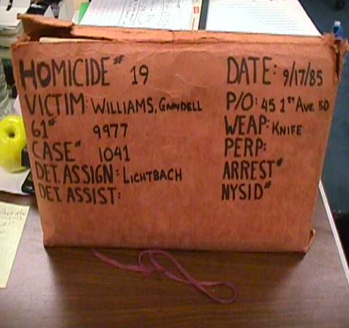From a recent piece in the Wall Street Journal about the homicide clearance rates for 2012:
“When the cold cases aren’t included, the NYPD solved 57% of the year’s 419 homicides, said Paul Browne, chief spokesman for the NYPD.”
He’s referring to the practice of including homicides from previous years that have been cleared this year in the current numbers.
But the percentage of unsolved murders could be even higher than that. A case is cleared when an arrest is made. (There is also something called exceptional clearances. A case is “exceptionally” cleared when the murderer has been identified definitively—by a substantiated confession for example—but the murderer has since died, or is in a country that refuses to extradite him.) But of the cases where an arrest has been made, if it turns out later that they arrested the wrong person, or if the case goes to trial and the person isn’t found guilty, the police department doesn’t go back and adjust the clearance rates. So they will add in murders that were solved, but they do not take out others that weren’t.
Also, I studied the numbers very carefully (my book came out in 2005, so the numbers I looked at were 2003 and earlier) and I found that an unsolved murder has up to 5 – 10% chance of being cleared within one year after it goes cold. After two years, that chance decreases to less than 1%. Not a lot of cold cases get solved, ultimately. If I did the math right, they’re saying they cleared 75 cold cases. That sounds high to me, given the fact that the Cold Case Squad is about a quarter of the size it was when I wrote my book, but plausible. Also, the cold case detectives are not the only ones working unsolved murders, and I don’t know which cases they are including in that number.
A case folder from an unsolved murder.













1 response so far ↓
1 Richard Gideon // Nov 13, 2015 at 8:50 pm
The fraudulent numbers from every source mean that safety is an illusion. I never bothered even reviewing the TV show How to Commit Murder. Seems like a whole lot of people don’t need instruction.
Leave a Comment